What if the washing machine won't drain the water?
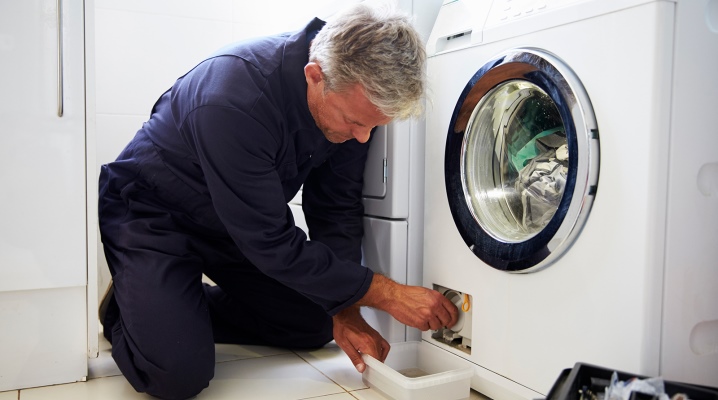
The washing machine has long been a device that is found in almost every home. Today, many well-known manufacturers produce household appliances of excellent quality. However, even the most reliable and practical machines are not immune from possible breakdowns and malfunctions. In this article, we will take a closer look at what needs to be done if the device does not drain water.
Description of the problem
The current range of washing machines cannot but please consumers. The stores offer a wide variety of models that differ from each other not only in size and design, but also in technical characteristics. Users try to purchase exclusively branded devices, since such products are characterized by excellent quality. But this does not mean that they will never break.
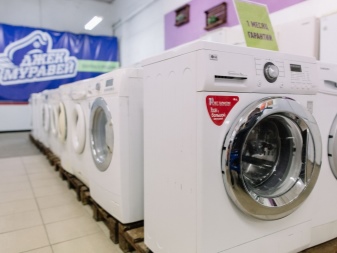
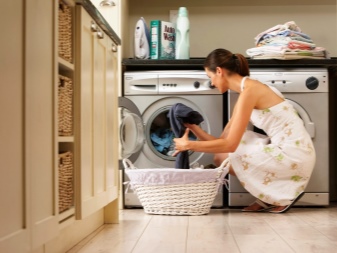
Often people are faced with the fact that their washing machines stop working properly. A common problem is the lack of water drainage. When a similar defect arises in the operation of household appliances, it cannot complete the washing process and function fully as it should. The exposed program simply stops. In this case, the hatch into which the laundry is loaded is certainly blocked. Behind the glass door, you can see how the water stands and does not leave the drum anywhere.
Often, at such moments, the washing machine not only stops normal operation, but also buzzes or cracks. Unpleasant sounds are impossible not to notice. They will indicate that the drain is not working in the washing machine.
If water remains in the device, and it stops working normally, it is important to figure out what caused the malfunction. Only after that does it make sense to start disassembling and repairing the device.
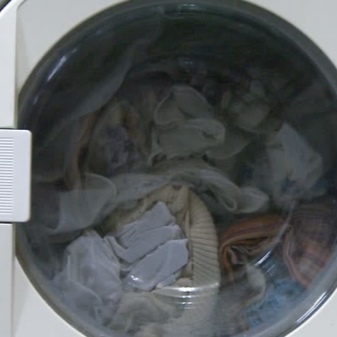
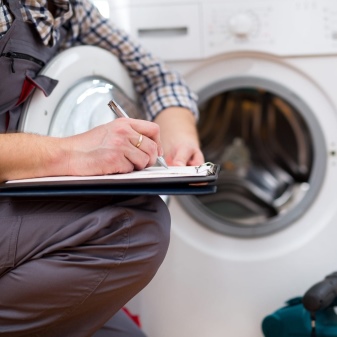
Causes
Almost any model of a washing machine can face this problem, even if it is produced by a well-known brand and is very expensive. You should not be intimidated by such problems. The first thing the owners will need to do is find out what the cause of the breakdown is. Consider the most common factors leading to the lack of draining water from the device.

Sewer blockage
In most cases, the draining of the fluid from the machine stops if there is a serious blockage in the sewer system. Clogs usually form when small items such as pins, buttons, nails or coins fall into the drum of the device, which have flown out of pockets of clothes. Foreign objects are rinsed out of the drum together with the water. That is why it is so important to carefully examine all the laundry before starting the wash - nothing should remain in it, otherwise the blockage cannot be avoided.
In modern models of machines, a special mesh filter is installed at the outlet of the drum. The remaining debris cannot pass through its tiny cells and simply gets stuck in the filter piece. But small woven lint, hair, pet hair from clothes are quite capable of overcoming the mesh of the filter part of the machine. In such a situation, the blockage accumulates directly in the drain hose, due to which the device will not be able to fully drain the waste liquid.
Blockages are not only due to these factors. Such problems often arise if household appliances are old and have been in operation for many years.Often, these problems appear if the hostess does not show the necessary care in handling the equipment.

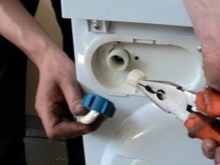
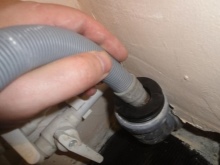
Wrong choice of washing mode
The automatic machine will stop draining water even if the owners choose an inappropriate washing mode, in which the specified process is not provided. For example, spinning and delicate wash do not activate the drain mechanism. To drain the spent water mass, you need to set the desired program yourself, manually.
In many models of modern automatic machines, the pump will not start pumping liquid in the manual wash mode.
In order to choose the right washing program correctly, the hostess will definitely need to carefully study the operating instructions for the device. Usually it comes with household appliances and is as clear as possible so that you can easily understand it.
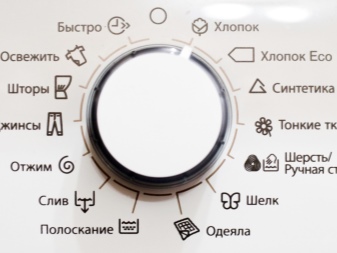
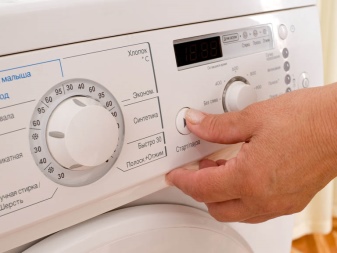
Machine breakdown related
Unfortunately, the absence of a drain does not always indicate simple and quickly fixable problems in the operation of household appliances. Often, the problem lies in certain breakdowns associated with specific structural units.
Long years of operation, blockages and hard water often cause the drain pump to malfunction. A malfunctioning pump will begin to hum loudly or simply stop starting.
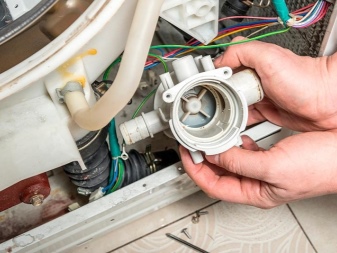
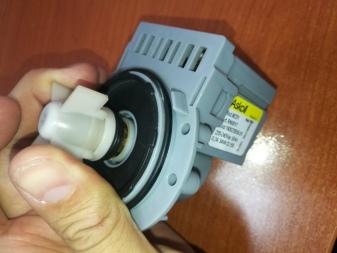
A malfunction concerning the electric pump may be caused by operating the device without water. This is mainly due to a jammed impeller. A spare part with blades in its device is located in the inner part of the pump. The impeller rotates, thereby converting energy from the engine into pressure to move the water. Trapped hair and threads will cause the blades to get stuck and blocked. Because of this, the part simply stops turning the water in the apparatus. As a result, the pump starts running dry and burns out.
Another important component of the device, the electronic control board, can also be damaged. A short circuit is often the cause of a failure in its functioning. From a voltage surge in the electrical network, capacitors, as well as wires and contacts of microcircuits, burn out.
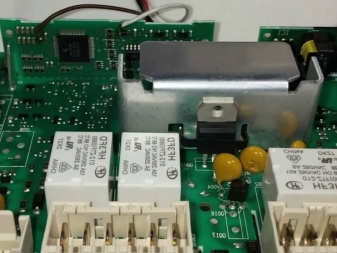
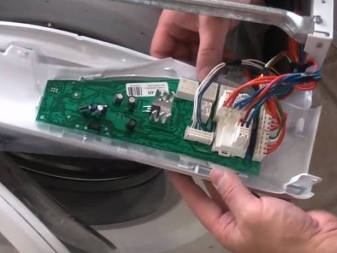
Diagnostics
If there are breakdowns associated with draining the waste liquid in the washing machine, the owners can start the self-diagnosis function of household appliances. Many machine models have a similar function, thanks to which the technician will independently calculate what is the reason for the malfunction and display it on the information display.
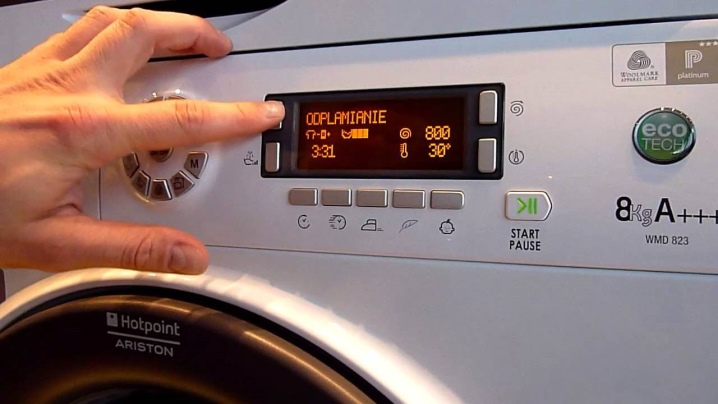
The self-diagnosis function is not available on all washing machine models. In this case, the owners can independently conduct a kind of revision of the device in order to find the cause of the malfunction. Let's see how this can be done.
- First of all, you need to understand that all diagnostic manipulations are allowed to be performed only with the machine disconnected from the network. Try not to forget about it.
- First, you should check the correctness of the set washing program if water accumulates in the drum. As mentioned above, the "Night" or "Hand" wash modes can lead to similar consequences. In such a situation, it is enough to cancel the program and start the drain.
- Inspect the drain hose of the unit carefully. The blockage could have formed due to the fact that in some place the hose was bent. Because of this, excess waste simply cannot go down the drain.
- The siphon could also get clogged if the device is connected through it. To check this, you can disconnect the hose and redirect it to the sink, and then start the drain process. If you notice that the liquid flows freely from the hose, then the reason lies in the sewage system. It is enough to clean it with specialized tools or call a plumber.
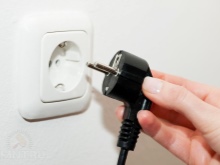
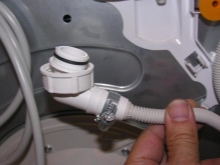
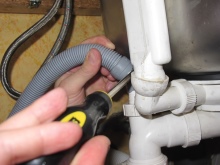
If you have completed all the above measures for diagnosing the equipment, and it still does not drain the spent liquid to the end (or completely), you can try to restart the device. Disconnect it from the mains, let it stand off for 15-20 minutes, and then restart the program responsible for draining.
If the situation has not changed, you need to proceed to diagnostics of the internal parts of the device.
How do I fix the problem?
If the machine stops and does not drain the water well, the owners can independently find and solve the problem that has arisen. Home appliance repairs will depend on the underlying cause that led to the negative consequences. Let's consider how you can fix an automatic machine on your own.
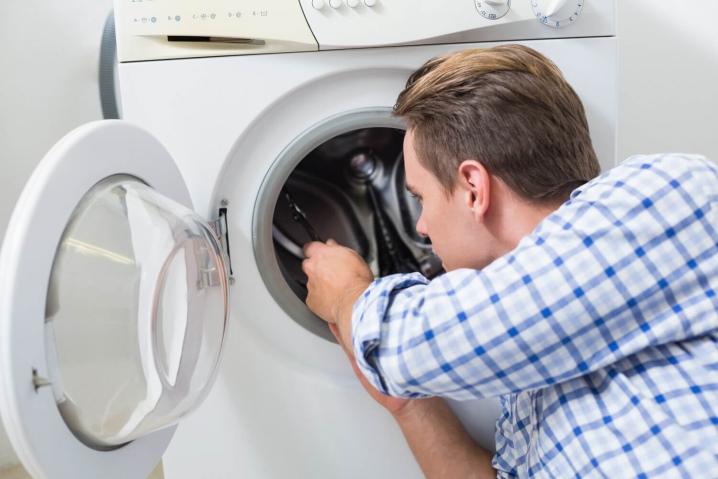
How do I drain the water?
To empty the drum of the device, you will need to prepare a large reservoir into which you will collect the escaping liquid. You can remove waste water masses using the following elements:
- drain filter;
- drain hose;
- emergency drain tube;
- hatch for loading linen for washing.
It is recommended to start with an emergency tube. It is located in front of the drain filter piece. You will need to carefully open a small hatch and lower the tube down. It should be borne in mind that this element is not present in all models of washing machines.
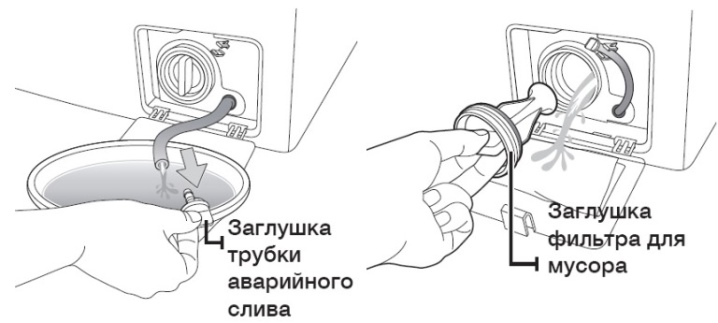
If the tube is not provided in the design of the equipment, it is worth going to the drain filter. For devices from different manufacturers, this element is located in different zones. The part can be hidden behind a hatch on the front half of the device panel or under the body. The features of the device of a particular model are always described in detail in the operating instructions.
In the first case, you will need to carefully open the square door, unscrew the screw and pull the filter. If we are talking about the second option, here the matter will be more complicated: first you need to remove the bottom of the device and only then remove the filter element.
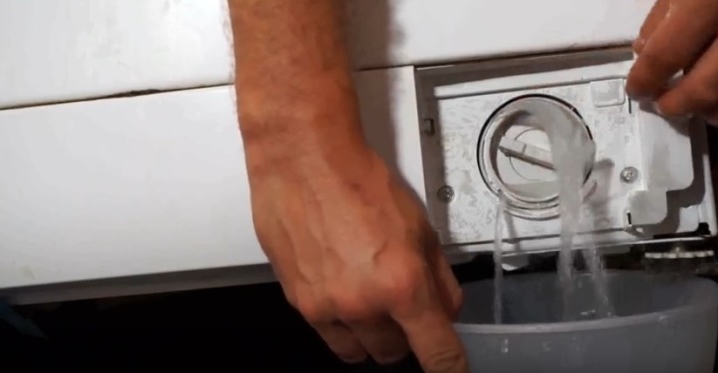
The next option is to drain with a hose. In most cases, the branch pipe is fixed on the body of the equipment in a vertical position. Loosen the fastening clamps slightly and immerse the hose in the water collection tank in a sink or bathtub.
If gentle methods did not work, and it was still not possible to pour out the liquid, you can do this by using the loading door. To do this, you need to turn off the washing mode and wait a couple of minutes until the door is unlocked. After that, you can open the hatch of the machine. But be prepared for the fact that all the accumulated water will suddenly pour out of it. It is advisable to prepare and immediately substitute a basin or any other reservoir into which all the liquid from the drum of the device will be poured. You can lay rags around.
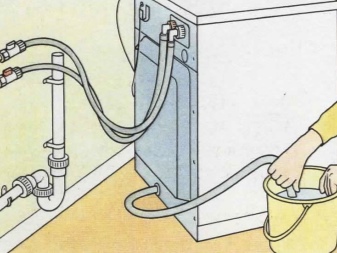
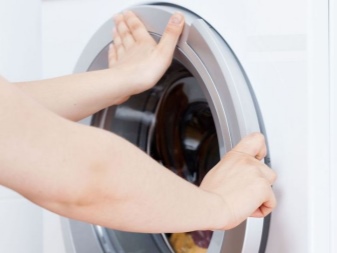
Clearing blockages
If the machine draws water, but does not pump it out, then the reason is often hidden in a clogged hose or filter. In this case, the listed spare parts will need to be disconnected from the device structure. To clean the filter, you will need to do the following:
- press and carefully flip off the door;
- unscrew the securing bolts that open in front of you;
- carefully remove the filtering part, possibly by hooking it with a flat screwdriver or a small knife (do this as carefully as possible so as not to damage the elements you are working with and not spoil the appearance of the device);
- hold the filter under a pressure of water so that it can be cleaned of excess impurities.
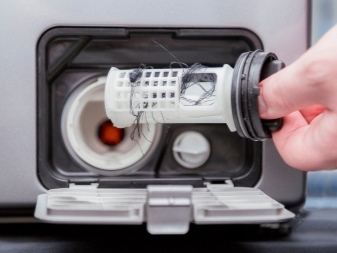
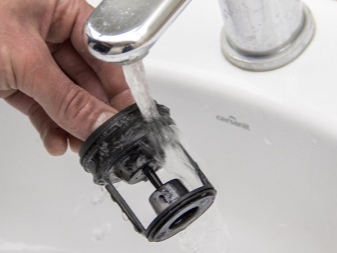
After cleaning the filter of the machine, you can go to the drain pipe. Remove the hose and proceed as follows:
- gently push through the blockage with a wire or metal cable;
- pour in a special pipe cleaner and leave all the parts like this for 10 minutes;
- then you will need to thoroughly rinse the hose under the pressure of water;
- at the end of the work, install the branch pipe in its original place.
Having freed the drain mechanism of the device from blockages, start a new wash cycle and check how the water will drain.
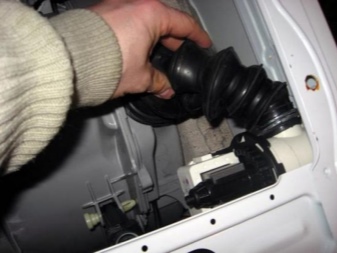
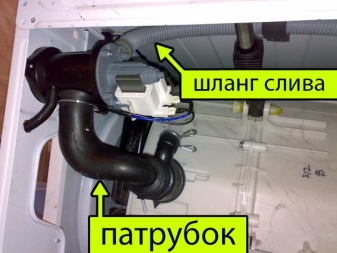
Reset programs
To eliminate the error of the washing program, you must reset the previously set mode. To do this, you must press the appropriate button or switch on sensor. If pressing the button once does not work, you can try holding the button down for a few seconds.
Do not unplug the power cord from the outlet. This manipulation will not solve the problem: the next time you start the technique, it will simply continue the previously interrupted program. Turning off the power during the wash process can cause damage to the control board of the machine.
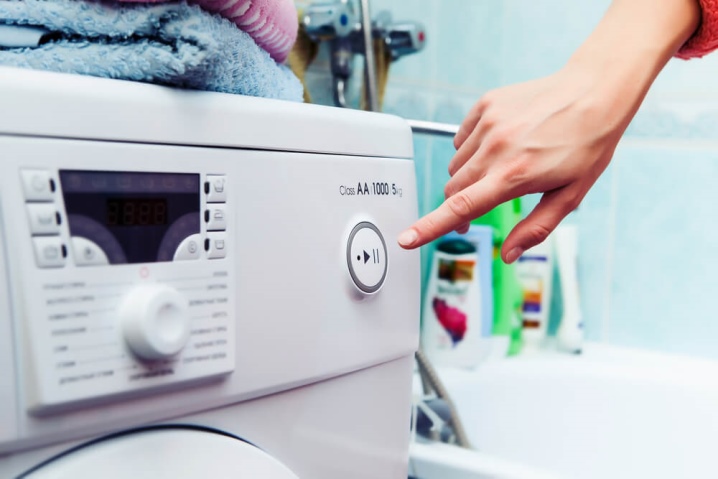
How do I change my pump?
If during inspection of the device you notice broken parts, they must be replaced with new ones. You can evaluate the performance of the machine's pump using a multimetera. You will need to bring the terminals of the device to the contacts of the pump wiring. If the resistance shows a three-digit number, this will indicate that the spare part is in good order. If the values "0" or "1" appear, then this will indicate a breakdown. A worn out pump will not be able to completely drain the water from the drum.
To disassemble the necessary elements of the washing machine, you need to prepare all the necessary tools and allocate free space. Often people move equipment to a garage or workshop to carry out repair work.
However, not everyone has this opportunity. In this case, you can free up more free space in the room and do all the work at home.
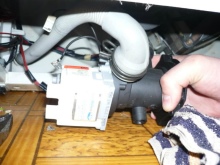
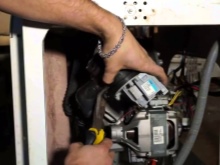
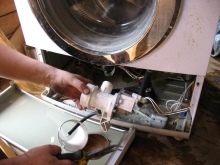
To install a new serviceable pump, you will need to carry out the following manipulations:
- completely remove the container into which the powder and fabric softener are added;
- unscrew the fasteners, carefully remove the panel - the pump of the device is located behind it;
- it is recommended to capture in the photo the location of all wires and nozzles, so that during the reassembly of the equipment you know exactly what and where you need to connect;
- carefully disconnect the wires responsible for supplying current to the pump engine;
- disconnect all existing connections in the structure;
- lead the loop with wiring and nozzles to a new suitable part;
- assemble the household appliances in the reverse order;
- check the results of the work performed by running a test wash.
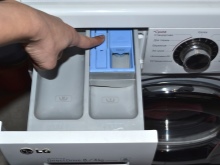

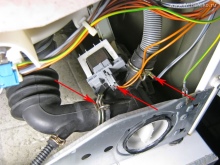
Useful tips for use
Modern washing machines are designed and manufactured in accordance with all standards, they are practical and reliable. But this does not mean that they do not need to be treated carefully and carefully. Only if you correctly operate such household appliances, you can expect that it will last a long time.
It is important to take into account that each model of the washing machine is designed for a certain amount of laundry loaded into its drum.I am. If this figure is exceeded, the unit will work for wear and tear. Often, when overloaded, the technician refuses to spin. The same problem can arise if there are too few things in the machine.
New parts for the unit must be purchased from specialized stores. You can take old and defective parts with you, show them to the seller and ask them to choose a suitable replacement for you.
When buying a repair kit via the Internet, it is imperative to check all identification (serial) numbers of spare parts.
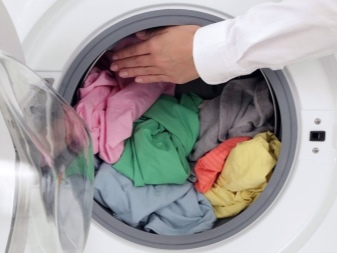
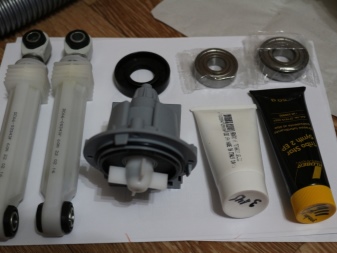
Check all pockets carefully before placing laundry in the drum. There should not be a single trifle in them, since they can not only damage the drum of the device, but also cause a serious blockage, due to which the equipment will not be able to pour out the waste water.
It is recommended to connect the unit to the electrical network not directly, but through a special power filter. It will be able to effectively smooth out power surges that often occur in our networks.Small jumps will not harm the device (this is provided for by its design), but serious drops can provoke a serious breakdown of the electronic unit of the machine.
Do not forget about regular cleaning of the filtering parts of the equipment. The filter is located under a small hatch on the front wall of the equipment. It is recommended to carry out cleaning activities at least once a year, and even better - every six months. If the filter is suddenly clogged, this may be one of the main reasons why the unit will stop draining water.
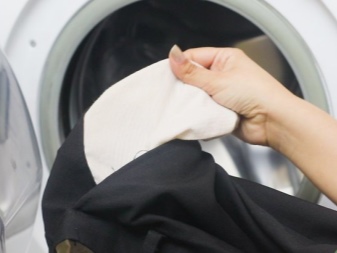
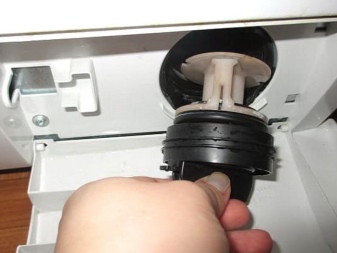
Before starting the next wash cycle, set the required mode with the utmost care. Thus, you will insure yourself against the lack of fluid drainage due to an incorrectly set program.
It is recommended to carry out preventive cleaning of the considered household appliances every year, but without linen. To do this, you will need to load the powder and the descaling compound, set the highest temperature and carry out a full wash cycle. As a result, the equipment will be effectively cleaned from scale and dirt.
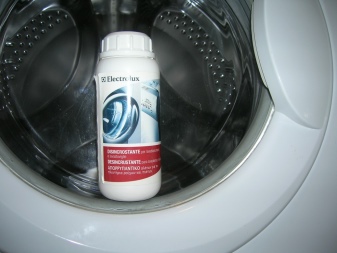
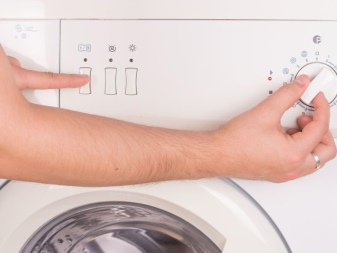
When disassembling certain units of the machine, try to act as carefully and carefully as possible. Take your time and do not make too sudden movements. You need to be especially careful with the wires in the design of the machine - if you pull out too roughly and abruptly, you can provoke them to deteriorate or break, which will entail unnecessary problems.
If you have identified what the problem is in the operation of the washing machine, then during disassembly it is recommended to check all the other nodes that are the most vulnerable. For example, by changing one of the parts in the design, you can additionally clean the filter and drain hose.
Before proceeding with the disassembly of your home appliances, it is recommended to place the instruction manual next to it.ation. Usually it contains all the necessary diagrams and sketches indicating the location of important nodes in certain places.
If you are not well versed in this technique, the instructions will come in handy.
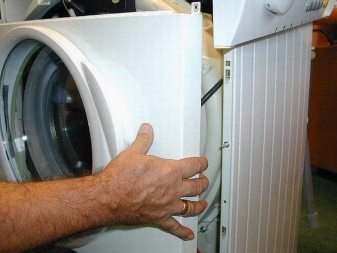
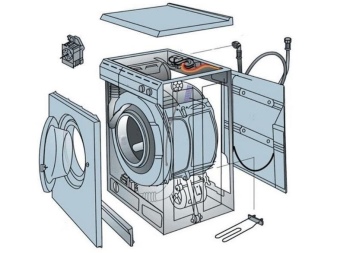
Buy for an automatic machine only those washing powders and detergents that are designed for use in the conditions of the machine. Typically, such compositions are marked accordingly. If you use products intended for hand washing, limescale will quickly appear in the unit.
If your washing machine is new and is still under warranty, under no circumstances should you disassemble and repair it. Of course, you can carry out all the necessary work yourself, but then you can be left without warranty service.
It is better not to waste time in vain and immediately go to the service center of the brand under which your household appliances were released.
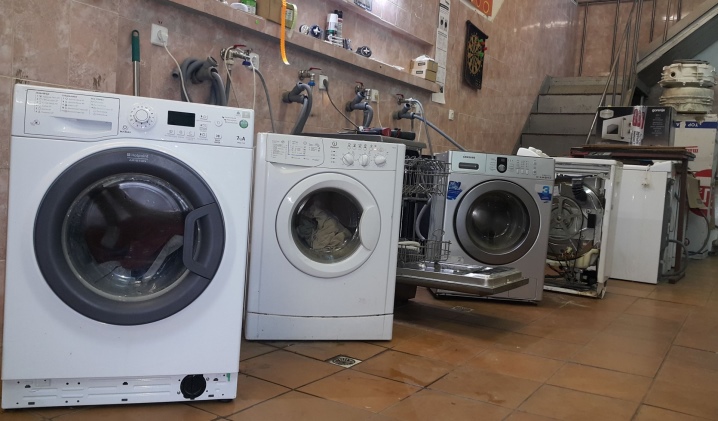
When disassembling the machine, you can not only take photos of important connections, but also mark the wires and contacts with a marker. These simple steps make reassembling the device quicker and easier.
If you do not understand much about the structure of modern automatic washing machines or are afraid to make serious mistakes, then you should not take risks. It is better to immediately call experienced craftsmen or contact a service center. This will lead to unnecessary expenses, but you will avoid damage to the unit. In any case, specialist services will be much cheaper than buying a new washing machine, especially if you have an expensive brand model at home.

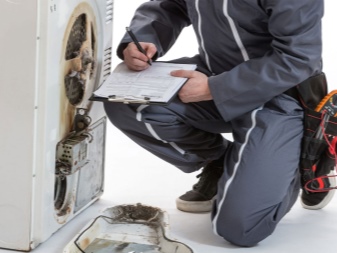
For information on what to do if there is no drain, see below.













The comment was sent successfully.